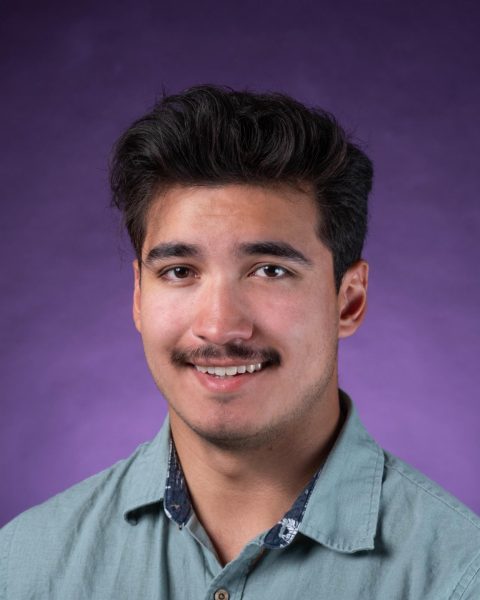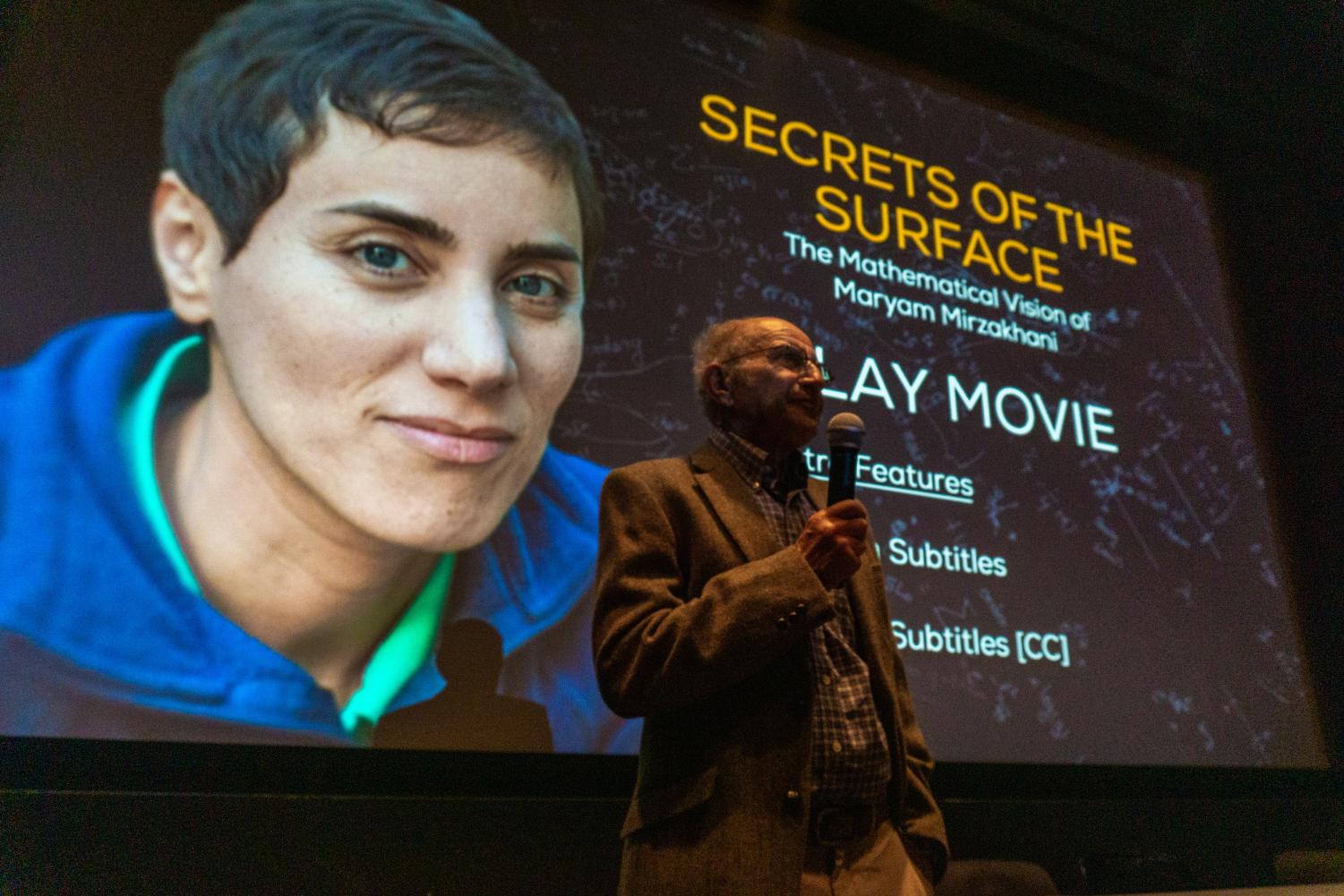



Multiple SF State organizations collaborate to screen a documentary on Maryam Mirzakhani who is the first woman to have received the most prestigious award in the field of mathematics.
May 8, 2023
The departments of Mathematics, Persian Studies and Modern Languages and Literatures, in collaboration with the School of Cinema, hosted a screening for “Secrets of the Surface: The Mathematical Vision of Maryam Mirzakhani,” a documentary about professor Maryam Mirzakhani’s life and work. The event concluded with a panel discussion from director George Csicsery and professors Mitra Ara, Emily Clader and Steven Kovacs.
Mirzakhani is the first woman to receive the Fields Medal for her work in geometrical shapes and moduli spaces. The Fields Medal is the most prestigious award that one can receive in the field of mathematics.
Csicsery is a filmmaker with an interest in science and mathematics who has directed 35 films. He initially proposed this documentary in 2014 when Mirzakhani was awarded the Fields Medal, however, he didn’t start working on the film until Mirzakhani’s passing in 2017.
In late 2019, Csicsery got the opportunity to visit Iran and shoot for the documentary. He spoke about his experience and how highly Mirzakhani is respected in Iran.
“I had the opportunity to go to Iran and film her high school and middle school, and meet a lot of her teachers to get a sense of how highly she’s respected in that country among students,” Csicsery said. “I really felt lucky to be able to do that at a time when it was possible to go there.”
Mirzakhani was born and raised in Tehran, where she was considered a prodigy. In 1994, the mathematician was one of the first women to participate in Iran’s International Mathematical Olympiad team where she won a gold medal. After that, she went on to obtain a bachelor’s degree from her hometown university, Sharif University of Technology, and was accepted into Harvard University where she wrote a research paper about curves on geometrical shapes and moduli spaces.
Mirzakhani had a deep insight and could solve mathematical problems with new solutions. During her time as a lecturer at Stanford University, she loved to talk to students — especially outside of class — to share ideas about math and theorize solutions. One of her biggest achievements was solving the question, “if you hit a cue ball on a billiards table, what is its trajectory?” She combined her concept in the paper about curves and used it to solve this mathematical problem.
Clader, a math professor at SF State, spoke about Mirzakhani’s intelligence and vision in using a concept she had researched and applying it to create a solution for a separate problem.
“What she did was sort of bridge two areas of math that people didn’t expect to be related,” Clader said. “When two fields, that there wasn’t a bridge between before, when that bridge gets built there’s immediately a flurry of new research.”
As the first woman to accomplish all the feats that she did, many girls in Iran and worldwide look up to Mirzakhani as a role model and are inspired by her work. Her birthday, which is on May 12, is celebrated by women in mathematics all around the world who host events in her honor.
Ara, founding director of the Persian Studies Program at SF State, translated subtitles for the movie with an emphasis on conveying the speaker’s language and meanings as accurately as possible for the audience.
Historically, Iran has been a hub of advancements in science and mathematics. However, sociopolitical circumstances such as extreme gender bias in Iran oppress women’s advancements in those areas and others.
Ara was part of the panel discussion after the screening when a panel moderator asked the question, “how can we get more women interested in science?” She responded by explaining the nuances of why women aren’t as prominent in those fields despite pursuing an education.
“The fact that we don’t have women or women don’t advance socially and professionally in fields of science, medicine and mathematics has nothing to do with the abilities of women or a lack of interest,” Ara said. “There is not a lack of interest, it’s a lack of opportunities and encouragements on the behalf of the society.”

